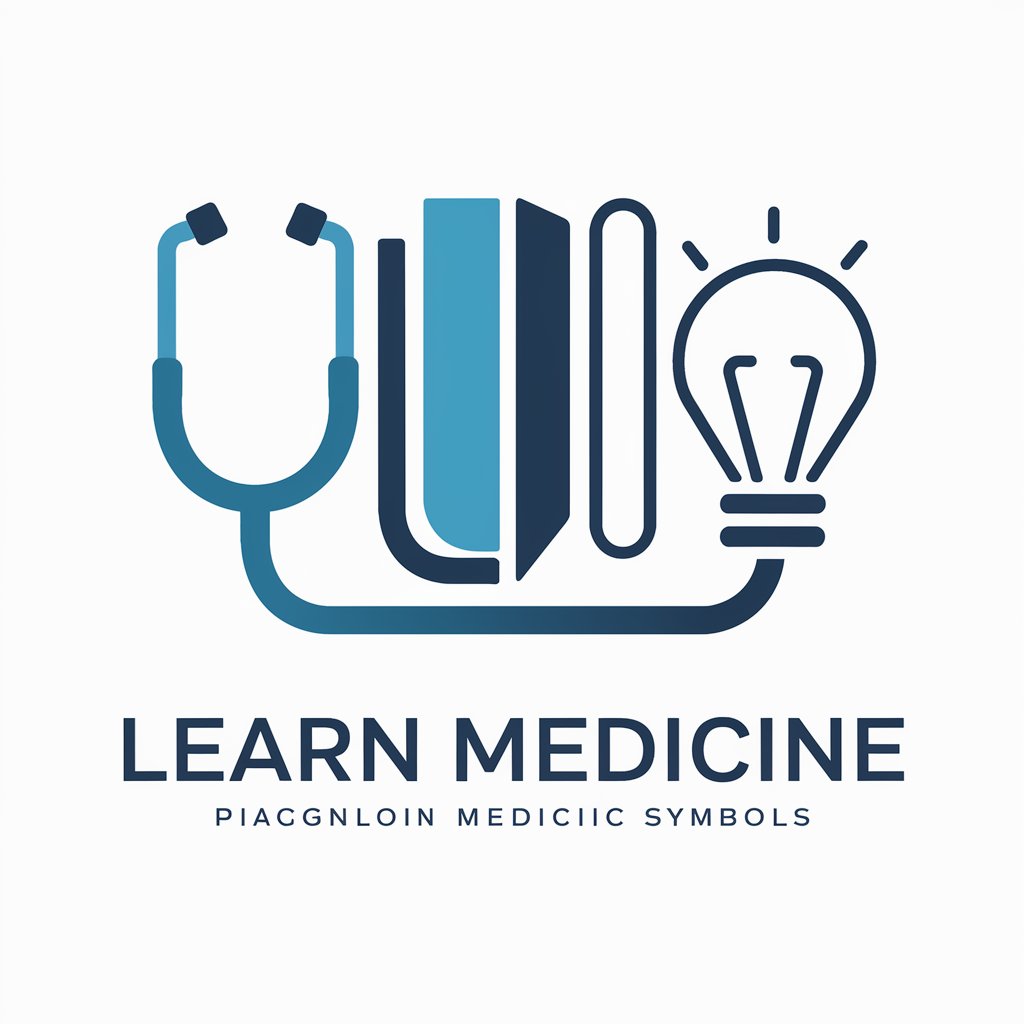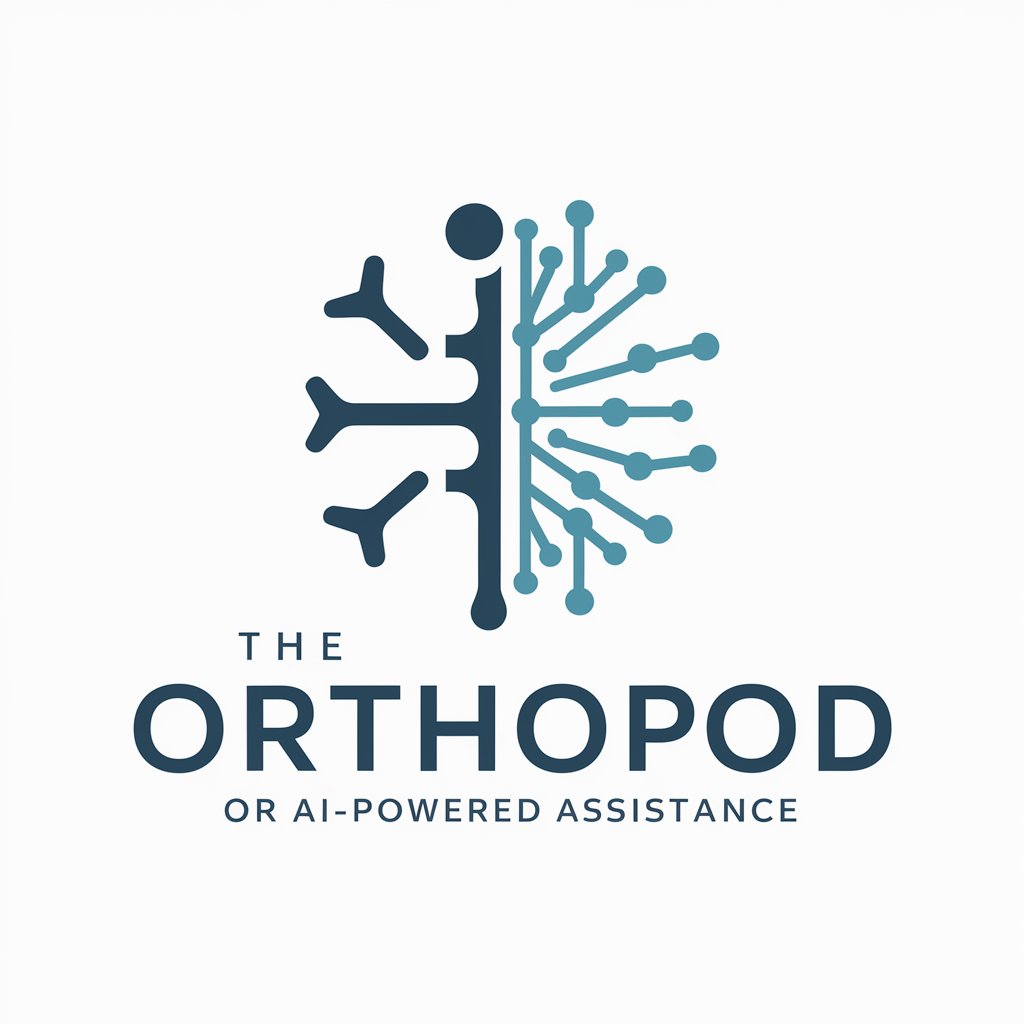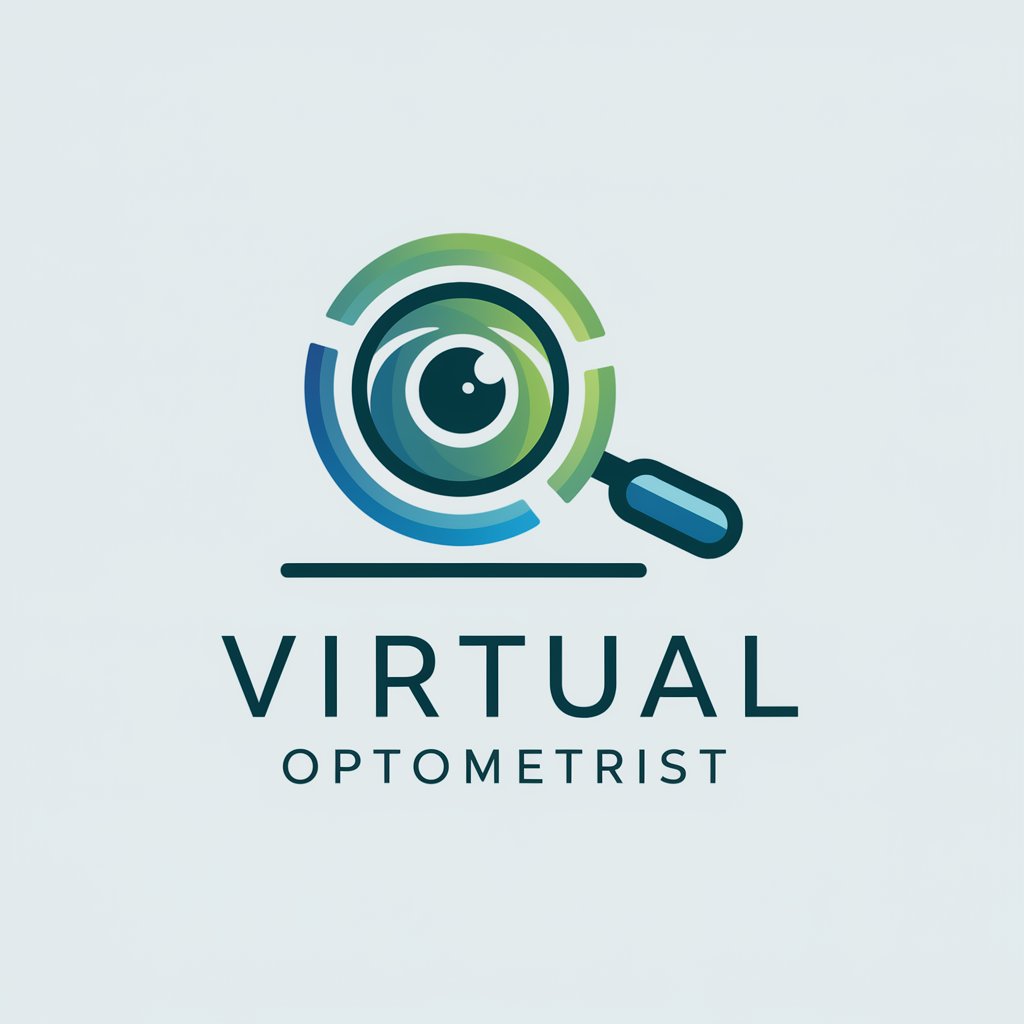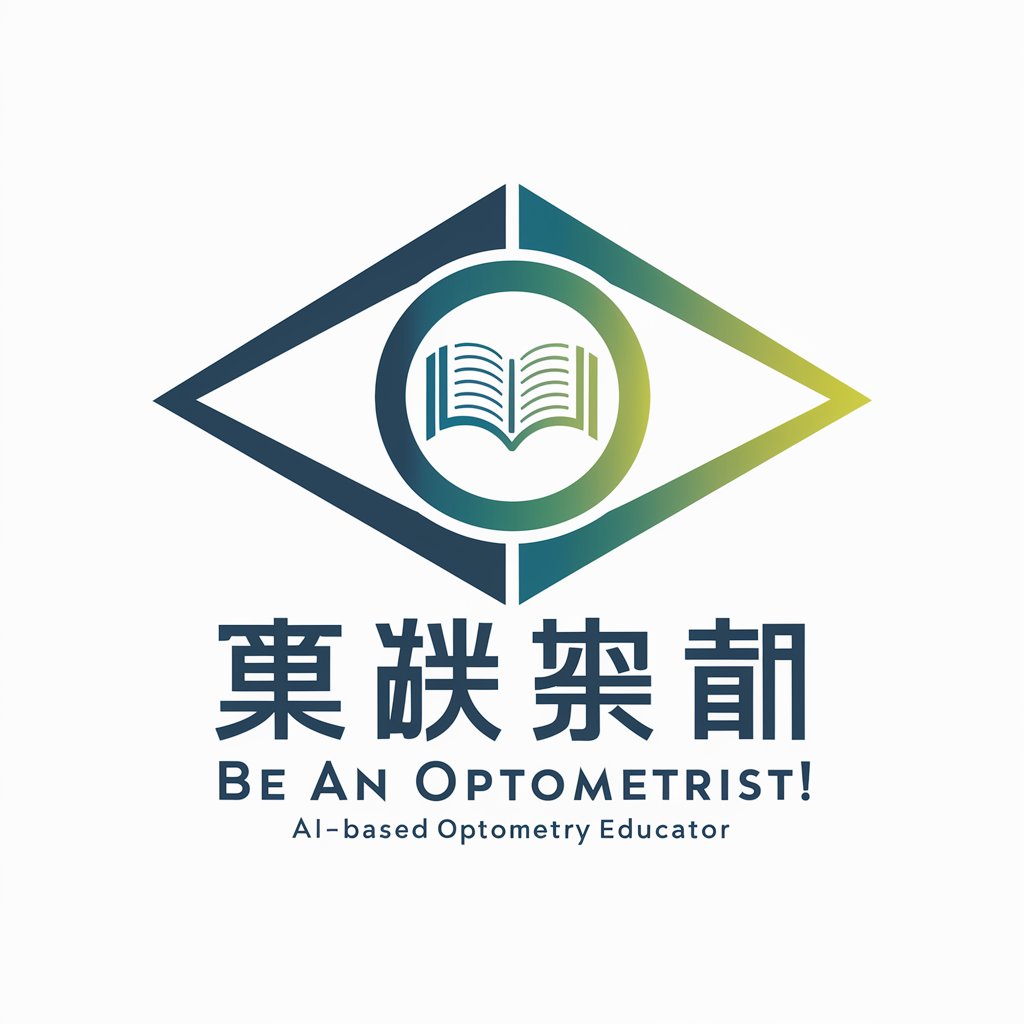
Interactive Training Modules for Orthoptists - Orthoptic Training and Simulations
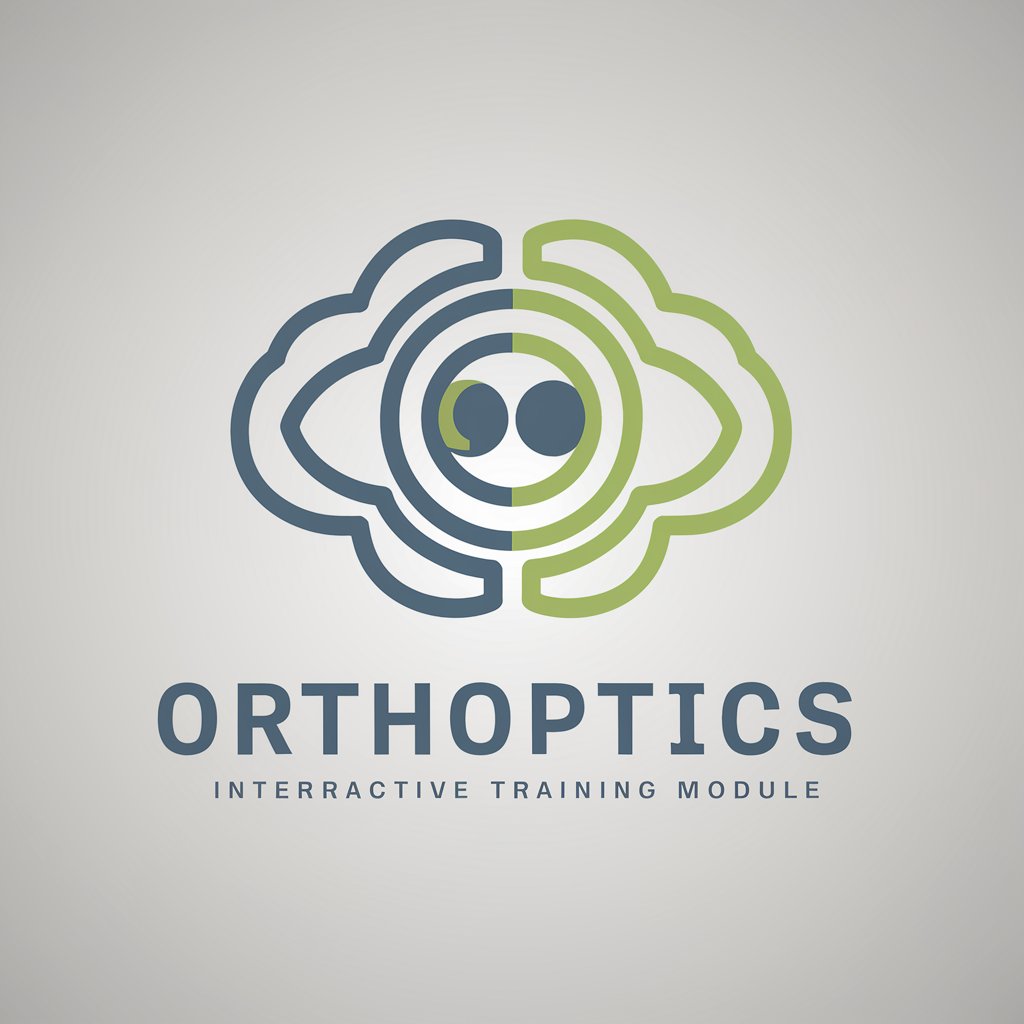
Welcome! Enhance your orthoptics skills with our interactive training modules.
Empowering Orthoptists with AI-Driven Learning
Describe the diagnostic techniques for...
Explain the treatment options for...
Generate a patient scenario involving...
What are the common symptoms of...
Get Embed Code
Introduction to Interactive Training Modules for Orthoptists
Interactive Training Modules for Orthoptists are designed to enhance the professional skills of orthoptists in diagnosing and managing binocular vision disorders. These modules use virtual simulations and interactive content to mimic clinical scenarios, thereby providing a hands-on learning experience without the need for physical patient interaction. For example, a module might simulate the assessment of a patient with strabismus, including various tests like cover tests and Hirschberg tests, allowing the learner to interpret results and decide on management strategies in a controlled, educational environment. Powered by ChatGPT-4o。

Core Functions of Interactive Training Modules for Orthoptists
Diagnostic Simulation
Example
Simulating the process of diagnosing amblyopia
Scenario
Users can interact with a virtual patient exhibiting symptoms of amblyopia. The module guides the user through the necessary vision assessments, interpretation of results, and the formulation of a treatment plan, providing feedback on accuracy and suggesting improvements.
Treatment Planning
Example
Creating management plans for binocular vision anomalies
Scenario
A module presents a case where a patient presents with diplopia. The user explores various treatment options such as prism correction, vision therapy, or surgical referrals, with the module providing evidence-based recommendations and potential outcomes for each choice.
Continued Education
Example
Updating knowledge on advanced diagnostic technologies
Scenario
Modules include updates on the latest advancements in diagnostic equipment like OCT (Optical Coherence Tomography) and visual field analyzers. Users can learn how to operate new technologies and interpret data through interactive quizzes and virtual lab settings.
Target User Groups for Interactive Training Modules for Orthoptists
Orthoptic Students
Students benefit from virtual hands-on experience which complements their academic studies, providing a safe environment to practice and make mistakes without real-world consequences.
Experienced Orthoptists
Seasoned professionals use these modules for continuing education, helping them stay updated with the latest practices and technologies in the field of orthoptics.
Educational Institutions
Universities and training programs can integrate these modules into their curriculum, enhancing their teaching methods with interactive, multimedia content that increases student engagement and learning retention.

Guidelines for Using Interactive Training Modules for Orthoptists
Initiate Trial
Start by visiting yeschat.ai to access a complimentary trial, no signup or ChatGPT Plus subscription required.
Explore Modules
Navigate through the available training modules. Each module is designed to focus on different aspects of binocular vision disorders, diagnostic techniques, and treatment options.
Engage with Simulations
Utilize the interactive patient simulations to apply your knowledge. These simulations include a variety of scenarios to diagnose and decide on treatment plans.
Review Feedback
After completing each module or simulation, review the feedback provided. This will highlight areas of strength and opportunities for improvement.
Continuous Learning
Repeat modules and simulations regularly to reinforce learning. The platform updates periodically with new content to reflect the latest in orthoptic practice.
Try other advanced and practical GPTs
Fashion Scout
Your AI-Powered Stylist

Azure AD Sage
AI-powered Azure AD Expertise

Mr. Carver's Accounting Expert
Empower your finance decisions with AI

Inkspire
Your Vision, Our Canvas: AI-Powered Tattoo Designs

Podcast Niche Finder
Unleash Your Podcast Potential with AI

Sarah
Your AI-powered Efficiency Partner

Conselheiro Financeiro e Investidor
Empowering Financial Decisions with AI

Solucionador React
Empowering developers with AI-driven coding assistance

GermanMentor
Master German with AI-Powered Tutoring

MineBugs
Empowering your Minecraft experience with AI

Boto3 SDK Expert (Node,Python,Java,.NET,Rust)
Empowering AWS Solutions with AI

Cloud Lambda Expert [Node,Python,Java,.NET,Rust]
Elevate your serverless applications with AI.
![Cloud Lambda Expert [Node,Python,Java,.NET,Rust]](https://r2.erweima.ai/i/IGHXEJg-Sja5Ek0nnFMPpQ.png)
Frequently Asked Questions about Interactive Training Modules for Orthoptists
What are Interactive Training Modules for Orthoptists?
These modules are digital learning tools designed to enhance the skills of orthoptists. They cover a range of topics from binocular vision disorders to treatment options, incorporating interactive simulations for hands-on learning.
Who can benefit from these modules?
Both novice and experienced orthoptists can benefit. The modules are structured to provide foundational knowledge for beginners and advanced scenarios for experienced professionals seeking to refine their skills.
What makes these modules unique?
The combination of detailed educational content, interactive patient scenarios, and immediate feedback sets these modules apart. This dynamic approach facilitates practical learning and application of knowledge.
How often are new modules added?
New modules and updates to existing ones are added periodically to ensure the content remains current with the latest practices and research in orthoptics.
Can these modules count towards continuing education?
While these modules are highly educational, the acceptance of them as formal continuing education credits varies by institution and geographic location. It's recommended to check with your accrediting body.
